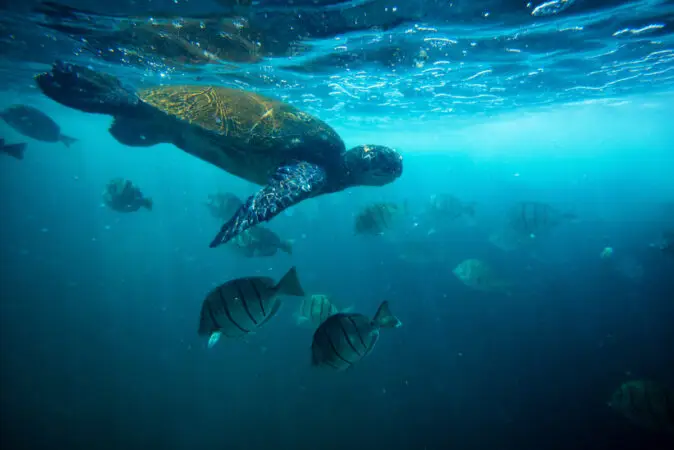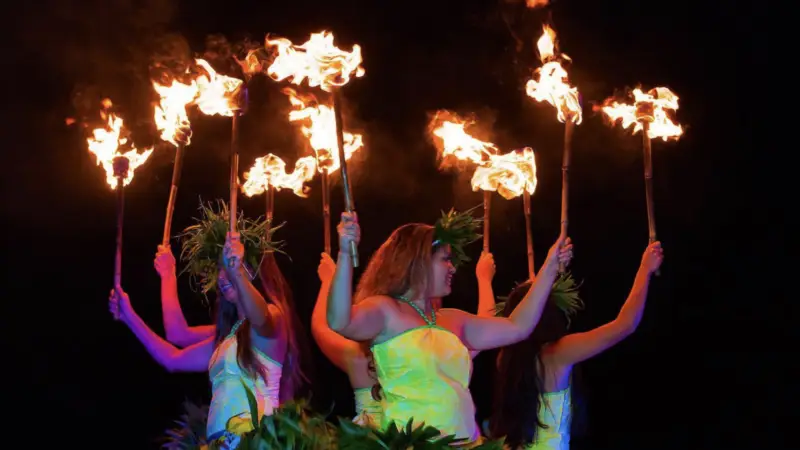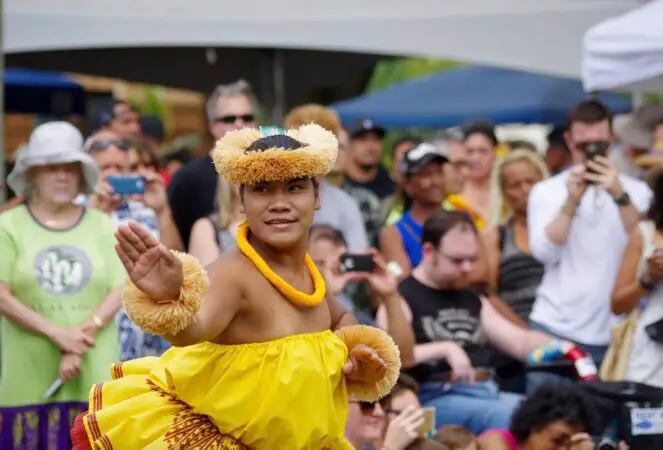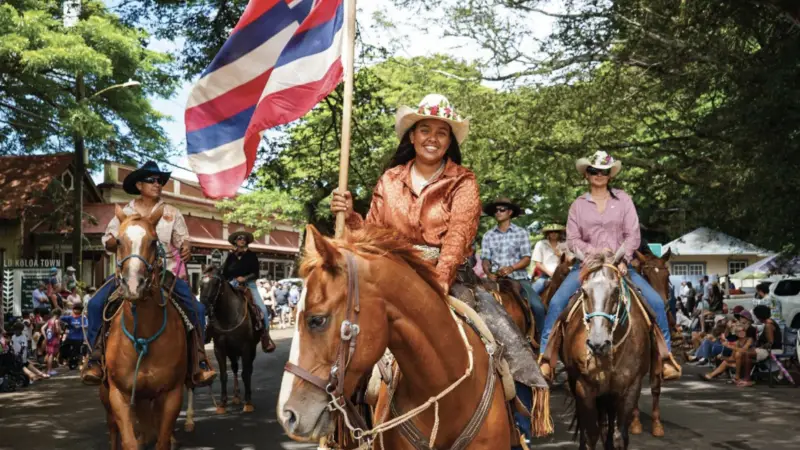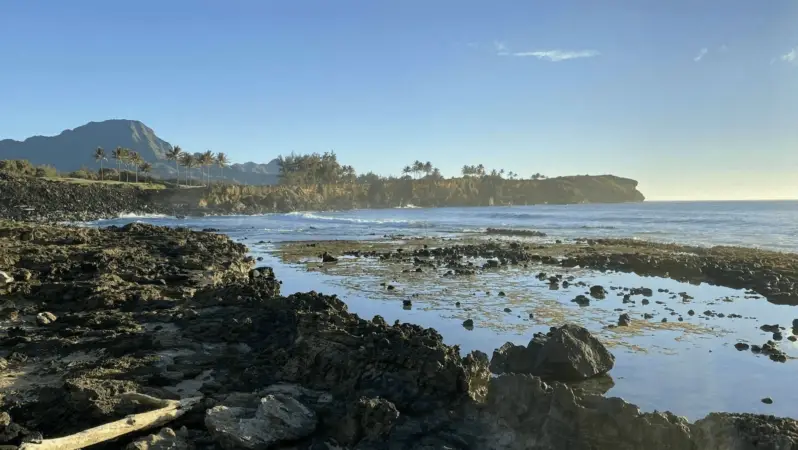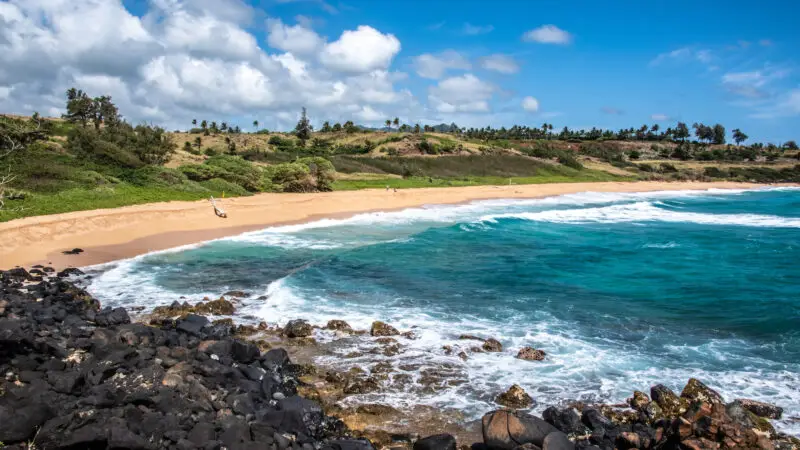Partner Content
Nicknamed the Garden Island for its spectacular greenery, Kaua‘i is an especially beautiful setting to explore the Hawaiian tradition of lei. And while May 1, or May Day, has been celebrated as Lei Day since 1927, you can find unique opportunities to learn how to make the floral garlands throughout the month and even year-round.
Guests at OUTRIGGER Kaua‘i Beach Resort & Spa, for example can learn how to string a lei of fresh blossoms — using the technique known as kui — in free hourlong workshops offered three mornings a week. And as part of its Lei Month festivities, as the resort is calling the month of May, Kumu Maka Herrod will host a free lei-making workshop followed by a friendly lei contest on May 16 at 10 a.m., open to guests of all ages.
Featured photo by HTA Heather Goodman, @hbgoodie.
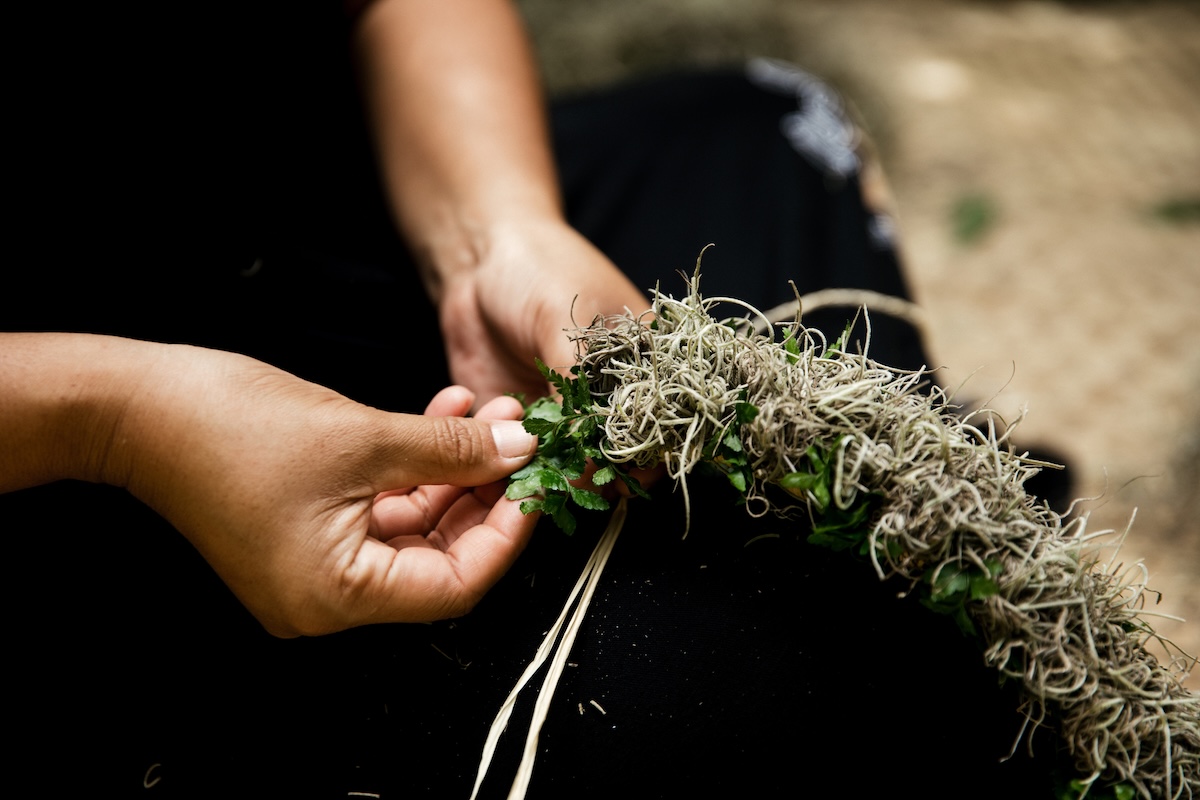
A hula expert (kumu) and cultural practitioner born on O‘ahu, Kumu Herrod will teach participants about the cultural significance of lei, given as tokens of affection, love, esteem and congratulations. The customs of giving and receiving lei date back to the arrival of the first Polynesian voyagers, who also made lei as offering to their gods or to invoke their presence, as with placing a maile lei on an altar of Laka, the goddess of hula. Warring factions that negotiated a peace treaty would also tie together maile lei as a symbol of unity. In modern times, the practice of piling all kinds of lei, including ones made of candy, money and yarn, around the necks of high school graduates means mid to late May is an ideal time to find lei in local drug stores and supermarkets.
At the May 16 workshop, Kumu Herrod will also demonstrate traditional techniques such as kui, haku (braiding) and wili (tying together) using a variety of materials, from traditional fresh flowers and ti leaves to creatively upcycled components. After participants in the May 16 workshop try their hand at designing a lei, guests will be invited to vote for their favorite.
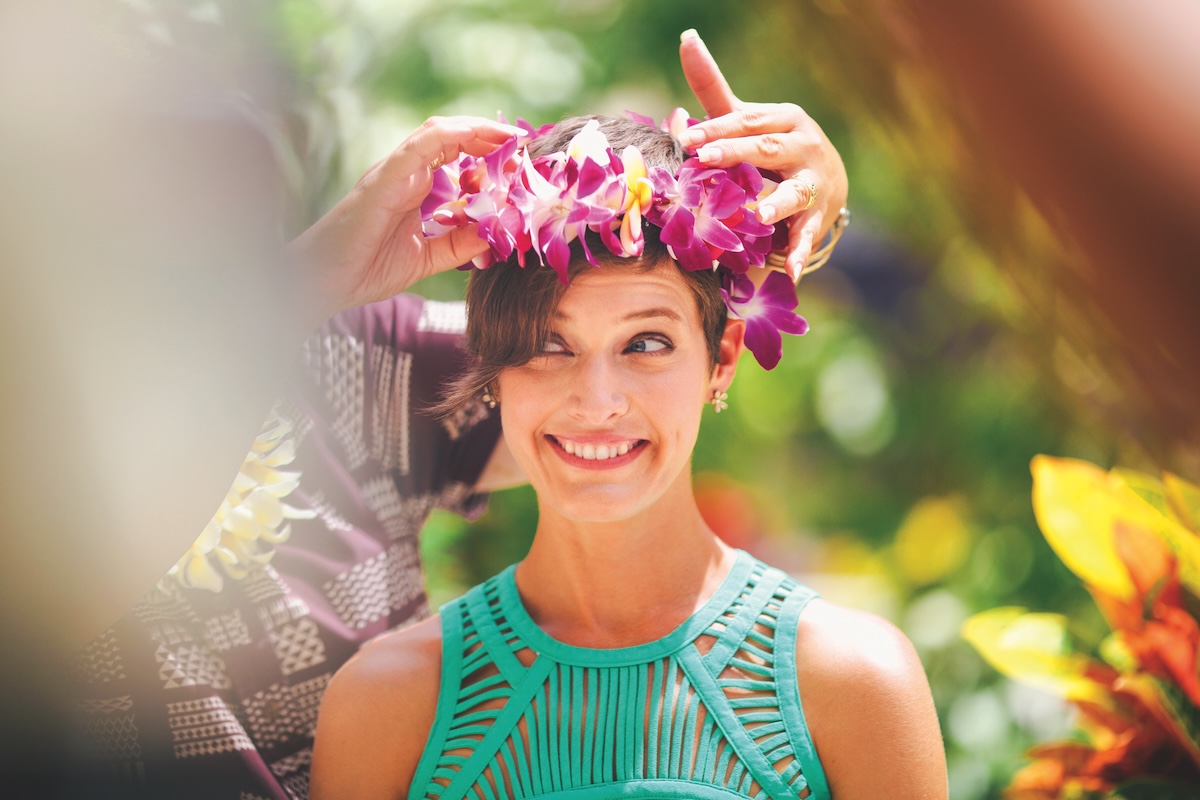
Although non-native blossoms such as purple orchid and fragrant plumeria blossoms are the most widely seen today, Hawaiians have also made lei from shells, nuts, seeds, vines, leaves and berries — a variety reflected in the signature lei of each island. The official lei of Kaua‘i is made from the yellow-green berries of mokihana, an endemic tree found only in the uplands of Kaua‘i and celebrated for the light licorice scent of its foliage. “Maika‘i Kaua‘i,” an ancient chant set to music in the 20th century, includes the line, Wai‘ale‘ale ana i ka lei mokihana — Mount Wai‘ale‘ale wears a lei of mokihana.
On the neighboring privately owned island of Ni‘ihau, the tiny, delicate kahelelani, momi and laiki shells that wash ashore on its beaches — often celebrated collectively in song as pupu o Ni‘hau (shells of Ni‘hau) — are painstakingly collected and sewn together for its official lei. For the rest of the islands, O‘ahu claims the yellow-orange flower of the native ilima shrub; Maui uses the non-native pink lokelani rose, introduced in the early 1800s; Moloka‘i can choose from the silver-green leaves, white blossoms and polished nuts of the kukui (candlenut) tree, one of the “canoe plants” brought by the Polynesian voyagers; Lana‘i uses the spidery orange and yellow strands of the endemic kauana‘oa vine, typically found on beaches; Hawai‘i Island has the feathery red pompoms of the endemic ‘ohi‘a lehua, often the first tree to repopulate lava flows; and uninhabited Kaho‘olawe has been designated silvery-gray hinahina, an endemic heliotrope.
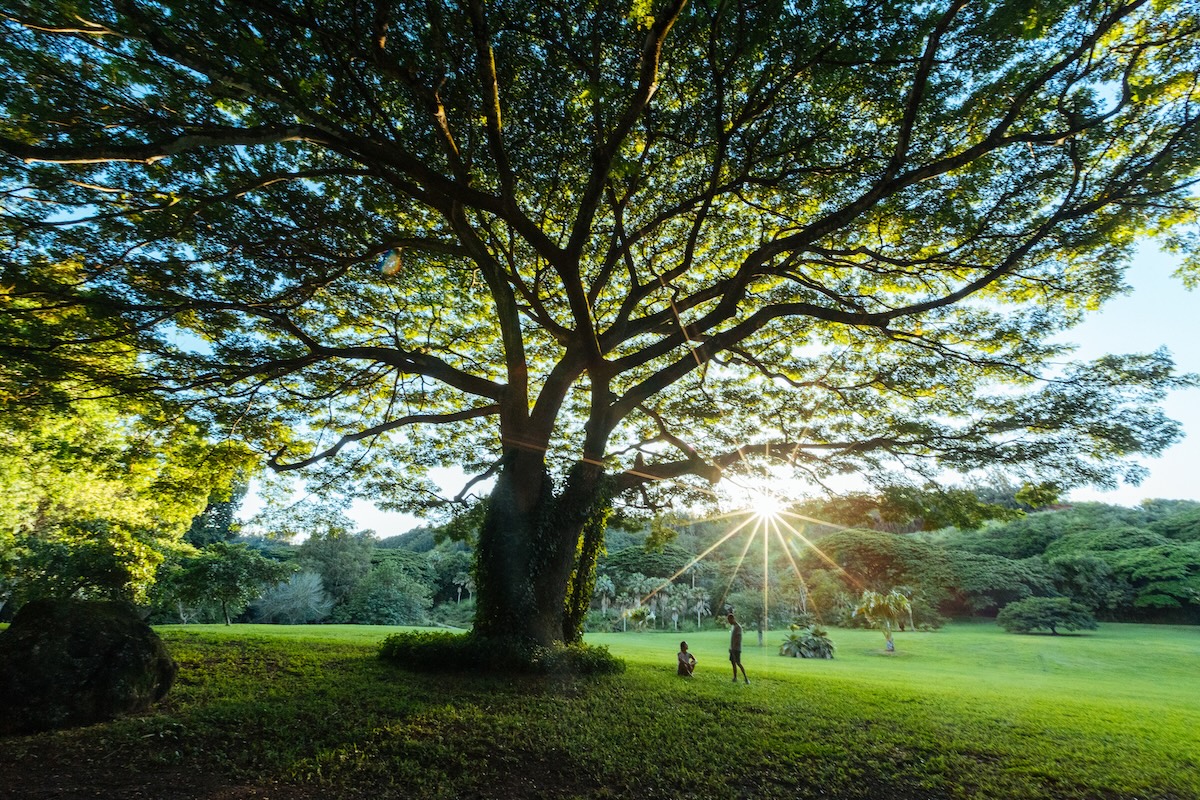
Given its central location near Lihu‘e, the OUTRIGGER Kaua‘i Beach Resort & Spa is also a convenient base for exploring the botanical gardens that nurture both native and non-native plants found in lei. To the south is the McBryde Garden, part of the National Tropical Botanical Garden in Lawa‘i Valley, which has the largest collection of native Hawaiian plants in the world, plus extensive displays of species of gardenias, heliconias, palms and coral trees. On Thursdays, the garden’s South Shore Visitor Center also hosts an Aloha Market from 10 a.m. to 2 p.m. with fresh plants, fruits, shell jewelry and other locally made arts and crafts, with a free hula show at 12:30 p.m. To the north is Limahuli Garden and Preserve, also part of the National Tropical Botanical Garden, which includes mokihana trees and plantation-era introductions such as plumeria, along with a Hawaiian ethnobotanical collection of endemic, native and canoe plants.
Between OUTRIGGER Kaua‘i Beach Resort & Spa and Limahuli lies Common Ground, an agroforest farm with tours that include a dinner and lei tutorial. Offered Wednesdays and Thursdays from 4 to 6 p.m., the tour begins with a gourmet meal of freshly harvested produce, locally sourced meats, island herbal tea and tropical fruit dessert. It’s followed by an interactive workshop that includes the culture and history of lei in Hawaii and a demonstration of making ti leaf lei and kupe‘e (floral bracelets), with fresh flowers from the farm’s lei garden.


